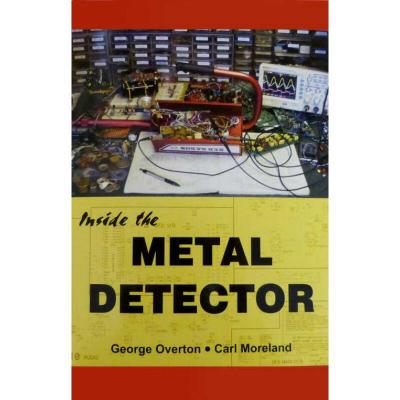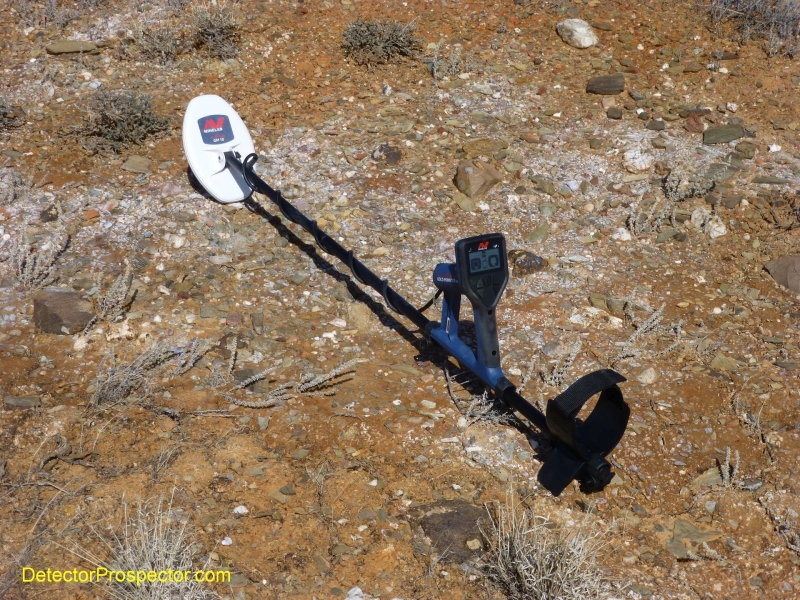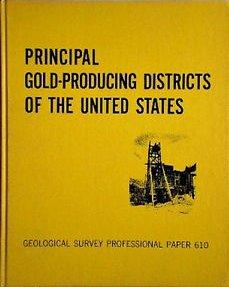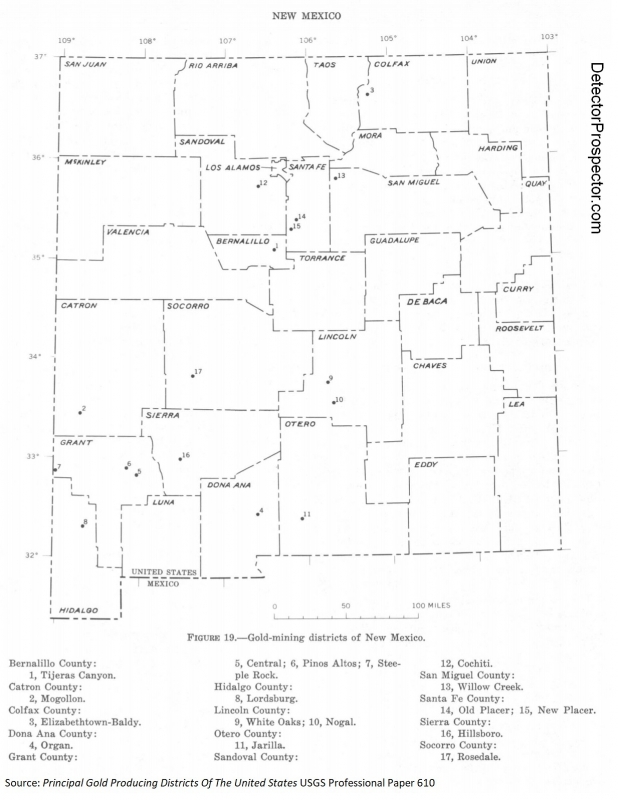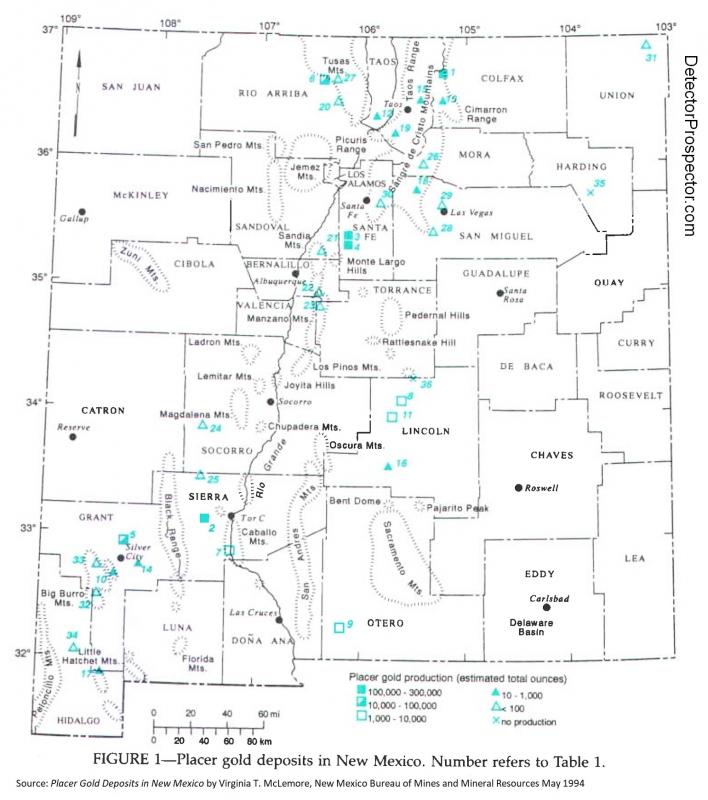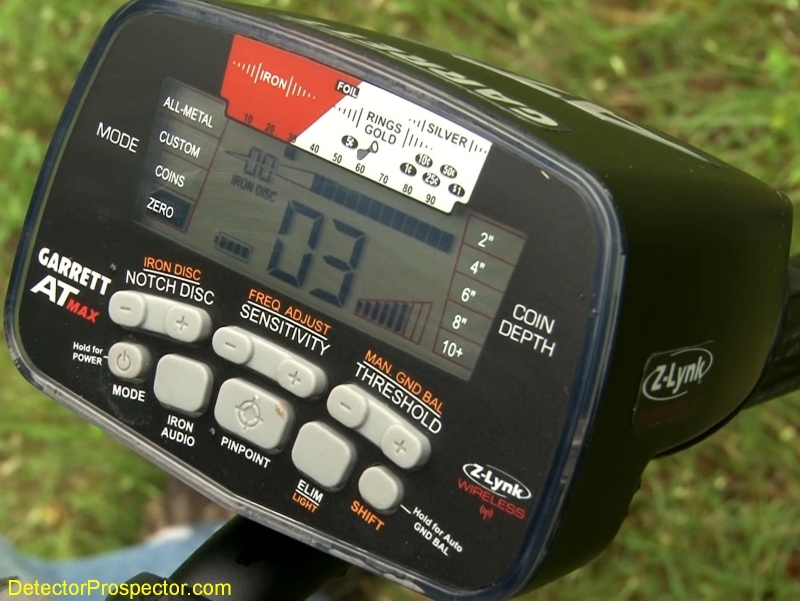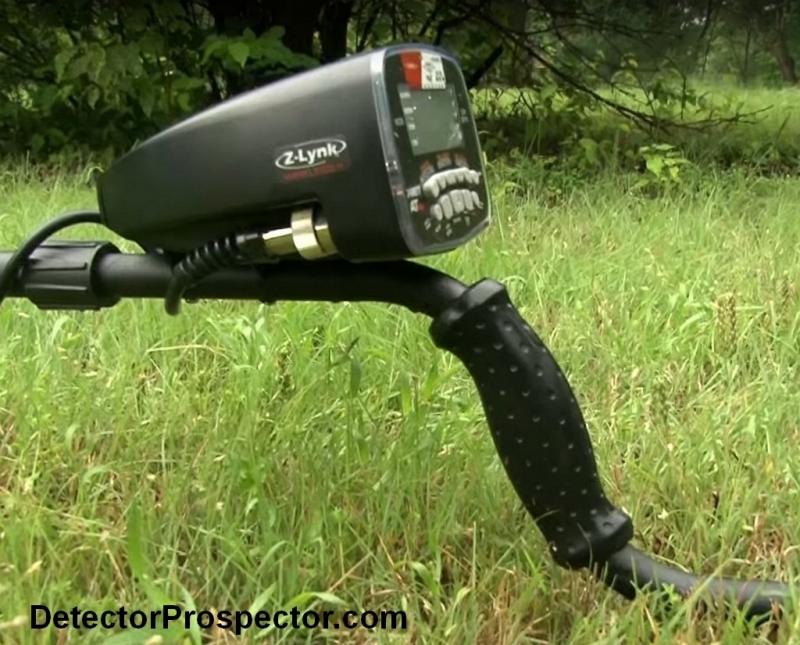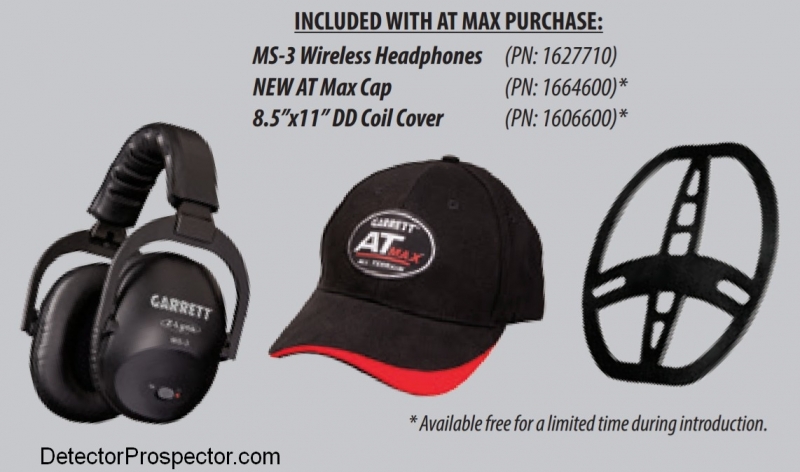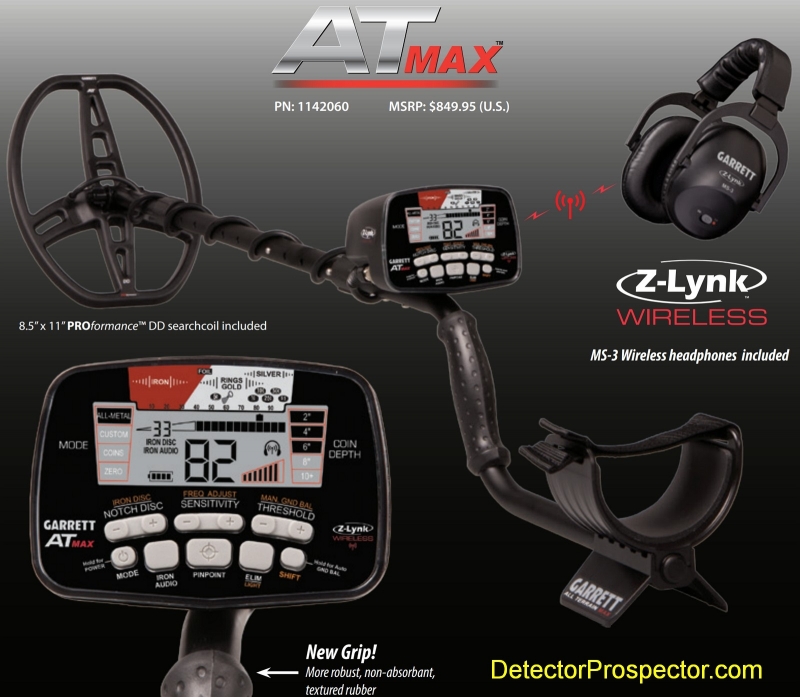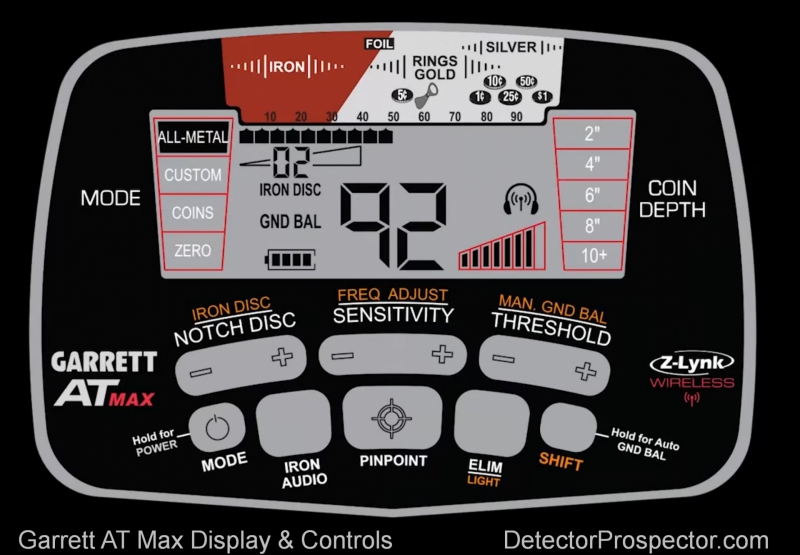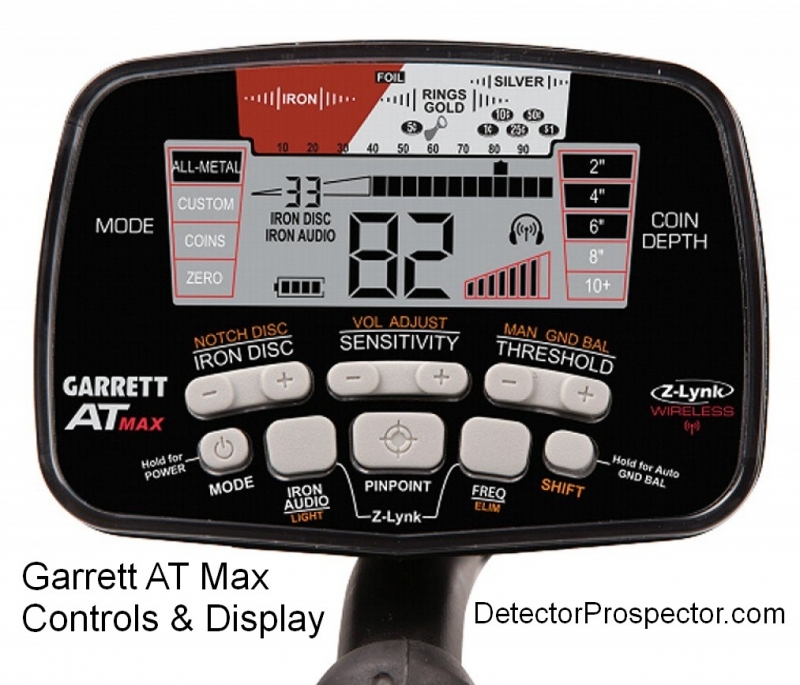-
Posts
19,796 -
Joined
Content Type
Forums
Detector Prospector Home
Detector Database
Downloads
Everything posted by Steve Herschbach
-
Tye, in case you do not know, Geotech is Carl Moreland, currently Engineering Manager, First Texas Products (Bounty Hunter, Fisher, Teknetics). He is the long time owner of the top notch Geotech website and co-author with George Overton of this book... Inside the Metal Detector explains theory and offers numerous experiments and projects that demonstrate the theory. You can build an off-resonance pinpointer, a GEB-discriminator, and a microprocessor-controlled PI detector. Even if you're not inclined to build a detector, the concepts learned from ITMD will help you better understand how your own detector works and what all those controls are really doing. The book can be purchased in paperback or Kindle versions on Amazon For what it is worth I have in the past talked about coils "being like antenna" or "basically being antenna" so am guilty of spreading that line of thought myself. The analogy works in some regards but is not technically correct so I am trying to clean up my act in that regard. Here is a great article by Carl - Coil Basics If you think about what "induction balance" infers it is a system in perfect balance, neither transmitting or receiving but creating a magnetic field.
-
"I am fortunate to have been involved in the testing of the new Minelab GOLD MONSTER 1000 prior to its release. One benefit is that I have seen the questions that others have posed about the detector, and now I can answer a few of them. When I use new detectors I always have a goal in mind. I am not trying to pick the detector apart for what it cannot do. Instead, I believe most well designed detectors have something they excel at. My goal is to determine how to use a new detector for maximum benefit. The best way to make that happen is to use the detector in the way it was intended to be used, instead of trying to force it to be something it is not. The key is to be realistic. The GOLD MONSTER 1000 is sold as an entry level single frequency metal detector. Expecting it to outperform detectors costing many times its price is unrealistic. Engineers face a very important choice when designing a single frequency metal detector, especially as regards gold prospecting. What frequency should the detector run at? That choice determines nearly everything else about the detector. In general, low frequencies below 20 kHz handle mineralized ground better, and offer good performance on larger gold nuggets. Higher frequencies over 20 kHz enhance the sensitivity to small gold nuggets, but unfortunately ground handling suffers. The number one question I see asked on the internet is how the GOLD MONSTER stacks up as compared to this detector or that detector." Read the rest of the report on Minelab's Treasure Talk Minelab Gold Monster 1000 in Nevada Eleven small nuggets found by Steve with GM1000 - Click for larger version 14.9 grains total, largest 4.4 grains Smallest at bottom 0.6 grain and 0.3 grain
-
Click here for tons of prior threads I use Sun Ray Pro Golds. Main reason is leather earmuff instead of vinyl. In most other regards they are like the Gray Ghosts etc. Though I really use my WM12 module on my GPZ 7000 more than headphones these days. But if using headphones it will be the Pro Golds or ear buds in parks.
-
Thanks hawkeye. My goal these days is to try and craft extremely detailed answers at one location. All future questions on the same subject then get aimed there. It means more work upfront, but saves tons of time later. And the one answer can be tweaked, tuned, and updated. Having it be part of a thread where others can contribute their own details makes it even sweeter. From now on people who email me or PM me questions can expect to get this sort of online genericized response. I spend way too much time answering the same email question over and over so this solves that issue for me. "teach a man to fish...." I enjoy stuff like this - it makes me think it through and I inevitably find new resources for myself in the process. My post is aimed at the U.S. To get started in Australia Historical Gold Mines in Google Earth Australian Mines Atlas Western Australia Mines and Mineral Deposits
- 12 replies
-
- mining claims
- gps and mapping
-
(and 1 more)
Tagged with:
-
It is not just Africa Des - not a lot of Garrett prospecting detectors being used by prospectors in the U.S. either. The ATX is used more by beach and relic hunters than by prospectors from what I have seen, and the AT Gold is not something you see often in the goldfields here. It just looks like an alternative for coin and relic hunters from all the posts seen on the forums. Apparently the Garrett marketing machine does not extend into Africa. Minelab and First Texas have significant "boots of the ground" there as does XP apparently. You don't have to rely on accident and word of mouth. It may have started that way but that's not the way it is now. However, Garrett is extremely successful at what they are doing, and that is building extremely popular bang for the buck products that appeal to huge numbers of people, plus a significant security detecting division. The success of the AT series and the Pro Pointer are the envy of the industry, and I think we will be able to count the Z-Lynk wireless system as another Garrett home run. The AT series is very popular not just in the U.S. but in Europe. I think the gold prospecting area suffers a bit simply because Garrett is so successful in other areas. I said it before and will say it again. The AT Max is a significant upgrade to the AT series and will no doubt sell as fast as Garrett can build them. For a lot of people it can be the only detector they own for everything they do.
-
Another question via email, with personal references removed. I prefer to answer these on the forum so everyone gets the benefit of the answer plus others can offer their opinions also. "I am new to metal detecting and, your site here has really helped me out. I have a couple questions that maybe you can help me out with. What are some of the geologic indicators that you look for to determining where to prospect for nuggets? I try to study some of the geology maps but I could use some further pinpointing. I have also been looking at the National map of Surficial Mineralogy. Using the aster and minsat7 maps what are some of the indicators that may point you to higher gold bearing ground? Any help would be deeply appreciated. Could you point me to some old places where you have found gold? I'm not asking to be shown active patches. Just areas that you feel are worked out. I just want to see what gold bearing ground looks like. This would help me to start to learn the commonalities and characteristics of gold bearing grounds. Still looking for that first nugget! Thanks again for any info you can provide." My method is much simpler than that. I basically look for gold where gold has been found before. Think of it like fishing. If you want to go catch salmon you have two options. You can go to where people have caught salmon before - pretty good odds here. Or you can go where nobody has ever caught a salmon before. Very poor odds! So call it prospecting using history to determine where gold has been found before, and then getting as close as I can to those places. History and proximity. Finally, I may then employ geology to narrow that search in a given area if it turns out the gold is confined to certain rock types. The first place I normally turn as a rough guide to any new location in the U.S. is: Principal Gold Producing Districts Of The United States USGS Professional Paper 610 by A. H. Koschmann and M. H. Bergendahl - A description of the geology, mining history, and production of the major gold-mining districts in 21 states. This 1968 publication obviously lacks the latest production figures but it still is a great overview to where an individual prospector can look for gold in the United States. It is a 283 page pdf download so be patient. Pay particular attention to the listed references in the extensive bibliography for doing further research. You can download this here and find many more useful free books on this website at the Metal Detecting & Prospecting Library Principal Gold Producing Districts of the United States So just for fun let's say I want to go look for gold in New Mexico. The section on New Mexico starts on page 200 and here is a quick summary of the opening paragraphs: "The gold-producing districts of New Mexico are distributed in a northeastward-trending mineral belt of variable width that extends diagonally across the State, from Hidalgo County in the southwest corner to Colfax County along the north-central border. From 1848 through 1965 New Mexico is credited with a gold production of about 2,267,000 ounces; however, several million dollars worth of placer gold was mined prior to 1848. Mining in New Mexico began long before discoveries were made in any of the other Western States (Lindgren and others, 1910, p. 17-19; Jones, 1904, p. 8-20). The copper deposits at Santa Rita were known and mined late in the 18th century, and placer gold mining began as early as 1828 in the Ortiz Mountains south of Santa Fe. In 1839 placer deposits were discovered farther south along the foot of the San Pedro Mountains. The earliest lode mining, except the work at Santa Rita, dates back to 1833 when a gold-quartz vein was worked in the Ortiz Mountains. In 1865 placers and, soon afterward, quartz lodes were found in the White Mountains in Lincoln County; in 1866 placer deposits were discovered at Elizabethtown in Colfax County, and silver-lead deposits were discovered in the Magdalena Range in Socorro County. In 1877 placers and gold-quartz veins were found at Hillsboro, and in 1878 phenomenally rich silver ore was found at Lake Valley in Sierra County. The mineral belt of New Mexico is in mountainous terrain that lies between the Colorado Plateau on the northwest and the Great Plains on the east. It is a zone of crustal disturbance in which the rocks were folded and faulted and intruded by stocks, dikes, and laccoliths of monzonitic rocks. Deposits of copper, lead, zinc, gold, and silver occur locally throughout this belt. Some deposits of copper and gold are Precambrian in age, but most of the ore deposits are associated with Upper Cretaceous or Tertiary intrusive rocks. The gold placers were probably derived from the weathering of these deposits. In later Tertiary time lavas spread out over wide areas of the State, and fissures within these rocks were later mineralized. These fissure veins are rich in gold and silver, but in most places they are relatively poor in base metals. In New Mexico, 17 districts in 13 counties yielded more than 10,000 ounces of gold each through 1957 (fig.19). Figure 19 is a handy map showing us where you want to look in New Mexico and also where looking is probably a waste of time. Click for larger version Gold mining districts of New Mexico The map shows what the text said "The mineral belt of New Mexico is in mountainous terrain that lies between the Colorado Plateau on the northwest and the Great Plains on the east." Sticking to this area is going to be your best bet. Based just on this map I see two areas of general interest - the central northern area, and the southwestern corner of the state. The text mentions that placer deposits were discovered at Elizabethtown in Colfax County, and the map shows that as the Elizabethtown-Baldy mining district. Following along in the text we find this: "The placer deposits along Grouse and Humbug Gulches, tributaries of Moreno Creek, each yielded more than $1 million in placer gold and silver. Another $2 million worth of placer gold and silver was recovered from the valleys of Moreno and Willow Creeks (Anderson, 1957, p. 38-39), and some gold also came from the gravels along Ute Creek. Graton (in Lindgren and others, 1910, p. 93) estimated the placer production of the Elizabethtown-Baldy district prior to 1904 at $2.5 million, and C. W. Henderson (in U. S. Bureau of Mines, 1929, pt. 1, p. 7 40) estimated the production through 1929 at about $3 million (145,138 ounces). The total placer production through 1959 was about 146,980 ounces." The reference material from the passage above is in the back of the book and is where we can get real details. Google is our friend. This stuff used to take me lots of visits to libraries! Anderson, E. C., 1957, The metal resources of New Mexico and their economic features through 1954: New Mexico Bur. Mines and Mineral Resources Bull. 39, 183 p. Lindgren, Waldemar, Graton, L. C., and Gordon, C. H., 1910, The ore deposits of New Mexico: U.S. Geol. Survey Prof. Paper 68, 361 p. Henderson, C. W., 1932, Gold, silver, copper, lead, and zinc in New Mexico: U.S. Bur. Mines, Mineral Resources U.S., 1929, pt. 1, p. 729-759. That is more than enough, but let's also Google placer gold new mexico Lots of great links there, but two jump out: Placer Gold Deposits of New Mexico 1972 USGS Bulletin 1348 by Maureen G. Johnson Placer Gold Deposits in New Mexico by Virginia T. McLemore, New Mexico Bureau of Mines and Mineral Resources May 1994 Notice the source of the last one. Most states with much mining have a state agency involved that can be a good source of information and in this case it is the New Mexico Bureau of Mines and Mineral Resources. That last one is a real gem and contains this passage: "All known placer deposits in New Mexico occur in late Tertiary to Recent rocks and occur as alluvial-fan deposits, bench or terrace gravel deposits, river bars, stream deposits (alluvial deposits), or as residual placers formed directly on top of lode deposits typically derived from Proterozoic, Cretaceous, and Tertiary source rocks (eluvial deposits). During fluvial events, large volumes of sediment containing free gold and other particles are transported and deposited in relatively poorly sorted alluvial and stream deposits. The gold is concentrated by gravity in incised stream valleys and alluvial fans in deeply weathered highlands. Most placer gold deposits in New Mexico are found in streams or arroyos that drain gold-bearing lode deposits, typically as quartz veins. The lode deposits range in age from Proterozoic to Laramide to mid-Tertiary (Oligocene-Miocene) (Table 2). There are some alluvial deposits distal from any obvious source terrains (Table 2). Eluvial deposits are common in many districts; some of the larger deposits are in the Jicarilla district." So now we have a lifetime of ideas on where to go and a basic idea of the geology. And an even better map! Click for larger version. Placer gold deposits in New Mexico Let's look for specific site information. 1. Go to http://westernmininghistory.com/mines 2. Click on New Mexico Mines 3. Click on Colfax County Mines 4. Click on Elizabethtown - Baldy District Here you will find basic site information, references, and a zoomable map with alternate satellite view. An alternate site... 1. Go to https://thediggings.com/usa 2. Click on Browse All States 3. Click on New Mexico 4. Click on Browse All Counties 5. Click on Colfax At this point note you can browse mining claim information or deposit information. Researching mining claims, land ownership, etc. is another topic but here is one source of mining claim location information. For now.... 6. Click on Browse All Deposits or Use The Interactive Map 7. Click on Elizabeth - Baldy A little more detail than the previous site, including this note "SOME FAIRLY COARSE NUGGETS IN WILLOW, UTE, SOUTH PONIL CREEKS, GROUSE AND HAMBURG GULCHES, MORENO RIVER" One more... 1. Go to https://www.mindat.org/loc-3366.html 2. Way down at bottom click on New Mexico 3. Way down at bottom click on Colfax County From here you can dig into all kinds of specific site information but the navigation is a real mess. Have fun! Historic claim staking activity can be a clue. You can get the Big Picture by looking at Mine Claim Activity on Federal Lands for the period 1976 through 2010 OK, that really should have answered your question. As far as places I have been, they are nearly all in Alaska and can be found here. Now, I did all the above from scratch with no real prior information on New Mexico in about 2 hours. You can do the same for any state. However, finding where the gold is really is the easy part. The hardest part by far is finding out who controls the land and getting proper permission for access. In Alaska everything is covered by thick ground cover, so opportunities for metal detecting are strictly at creek level, and nearly always claimed. The process there is simple - find out who owns the claims and get permission for access. In most of the western U.S. there is far less or no ground cover, and so getting in the vicinity of and searching around or near mining claims without being on them is a far more viable option than in Alaska. Or you can try and get permission to access the properties. You still need to be able to track down property locations and owners however. For private property I subscribe to and use OnXMaps for my PC, Google Earth, iPad, and iPhone. It quickly maps private property and gives you access to tax roll information about the owners. Tracking down mining claims is easy in the big picture and harder in the details. The Diggings referenced before has interactive claims maps. I subscribe to Minecache for their Google Earth overlay. However, the most comprehensive source with the deepest repository of Land Ownership information is Land Matters. They have online claim mapping with direct links to claims owner information. Note that all online sources have a lag time between the actual staking of a claim on the ground and when it reaches the online systems, if ever. I say if ever because some claims exist solely at the county or state levels and there is no good way to find them short of visiting local recorder's offices or eyeballs on the ground. Prior thread on finding claims information. Finally, I am not an expert geologist by any means. This is just how I go about it, but any tips, hints, advice, or information anyone is willing to share on this thread are very welcome!!
- 12 replies
-
- mining claims
- gps and mapping
-
(and 1 more)
Tagged with:
-
I was expecting what I call bits - under a gram each. More like a grain or two. I like yours better, can't wait to see some more big ones!
-
Still seems like a pretty big stretch to me that the same coils can truly run at peak performance at 13.6 kHz, 15 kHz, and 18 kHz. Pretty big spread there.
-
Does seem odd. It really only makes sense to me from the aspect of trying to get the machine to play better with salt water, especially given an increase in transmit gain as is being claimed for the AT Max. Still seems odd to me however that we have the same coils now being said to work fine on machines running from 13.6 kHz to 18 kHz. They were originally designed to run on the AT Pro and so I think they are tuned best at 15 kHz but work "well enough" at 13.6 kHz and 18 khz. I do like what I see in the AT Max but it just doesn't offer any capability I don't already have. It looks like it would be a great Lake Tahoe detector but between the ATX and CTX I don't need another water machine. And with Deus, Impact, and G2 I sure don't need another mid freaker, especially with the Deus V4 elliptical at 14 kHz soon to land on my doorstep.
-
No.
-
http://www.oldmapsonline.org/ And they have a phone app!
-
I suppose lots of people who had their hopes up are disappointed. Especially those wishing for multifrequency. I have to admit I was hoping for a slimmer control box. The fact is however I think Garrett will sell a ton of these. I always liked the AT Pro because it allowed me to set up a custom notch setup for jewelry detecting. What I did not like was the lack of true all metal mode. The AT Gold gave me the true all metal mode, but removed the ability to create and same a custom notch program! The AT Max offers the best of both worlds finally. The drop to 13.6 kHz is odd considering they are still going to use the same 15 kHz coils that have been available for the AT Pro and which are already being stretched to 18 kHz to work on the AT Gold. Presumably that is not enough frequency shift to really matter still and it should make the detector behave better around salt water. 13.6 khz is still not a bad gold frequency (White's MXT is 14 kHz and Fisher F75 13 khz) but not all that hot either. This is more a coin, jewelry, and relic machine. The bottom line is this is a solid upgrade of the AT Pro and a really good all purpose detector. It hits back hard at the White's MX Sport with an offering weighing a pound less while including wireless headphones for the same price. Nothing for prospectors to get all excited over however, so I will move this to the Coin & Relic forum later.
-
Nice report Steve, thanks! Just so you know and others also, the 9" round HF coil is going to get better depth on larger gold nuggets than the 5" x 9.5" elliptical. The elliptical will be hotter on smaller gold and have better target separation but it is a smaller coil, no getting around that, and maximum depth will therefore suffer a little. No free lunch. And hey, you are finding gold while we are waiting! Condor's First Report on Deus 9" HF Coil
-
The illustration in my post above shows MSRP $849.95 If they do a standard 15% discount for MAP pricing it will be $725 or they can just shoot for a MAP price point of $749. Edit: At least one dealer is taking pre-orders at $722.46 with rumored availability in June.
-
Well, pretty much what I expected. An updated AT Pro with built in wireless headphone capability, and Ace 400 style display (larger target id number) with meter backlight. They did add the true all metal mode that the AT Pro lacked, but at the same time dropped the frequency from 15 kHz to 13.6 kHz. This along with increased transmit power makes for a better coin and relic detector, and therefore it would not surprise me if a higher frequency version as an alternative to the AT Gold is still waiting to be revealed. Or it may be that Garrett will just let the AT Gold ride as is. Unlike everyone else Garrett does not seem very focused on the gold prospecting market. Garrett AT Max Features: Built-in Z-Lynk™ Wireless Technology Cut the cord! Integrated circuitry transmits audio to your wireless headphones. Six times faster than Bluetooth speed! Auto pairing. No cables, and no interference from other wireless devices. New Garrett MS-3™ Z-Lynk Wireless Headphones included The speed of Z-Lynk Wireless Technology, and high-fidelity audio . . . with no cords attached! Maximum Detection Depth Increased transmit power and enhanced electronics provides AT Max with significant depth increase. True All Metal Mode Detects all types of metal and provides the greatest possible detection depth and sensitivity. Backlight: Illuminates LCD screen for improved visibility in low-light situations. Optimized 13.6 kHz Frequency. The AT Max’s 13.6 kHz operating frequency provides excellent detection on a wide range of targets—including silver coins, gold jewelry, and brass relics. High Resolution Ground Balance Automatic and manually adjustable for improved performance. Includes 175 points of Ground Balance resolution, allowing the AT Max to handle both conductive soils (such as saltwater beaches) and highly mineralized ground. Automatic Ground Balance Window™ Garrett Exclusive feature will simultaneously ground balance to a range of values to help overcome localized ground variations. By reducing subtle ground responses, the Automatic Ground Balance Window smooths detector audio and allows the user to hear faint targets. Larger Display Numbers: Digital Target ID number, Iron Discrim number, etc. More Controls—All easily accessible with a single finger as you search. Iron Audio™ Hear discriminated iron (normally silenced) to avoid digging tricky, undesired flat iron items. All Metal Iron Audio™ Garrett Exclusive feature that audibly identifies discriminated iron while operating in a True All-Metal Mode. Adjustable Frequency Small frequency shifts to eliminate interference. All Terrain Versatility Fully submersible to 10-foot (3 meter) depth. Weatherproof design also protects against dusty and humid environments. For underwater use, optional wired headphones must be used. Digital Target ID—0 to 99 scale. High-Res Iron Discrimination™ 44 points of iron resolution. Adjustable Threshold User can manually adjust the audio threshold (the constant background sound or “hum”) to better hear faint targets. Pulse Width Modulation Audio Proportional PWM audio response and Tone Roll Audio provide more target information and sharp, responsive target signals. Four Search Modes: True All-Metal, Custom, Coins, and Zero Discrim Modes. Fast Recovery Speed • Notch Discrimination Coin Depth Indicator • Battery Condition Indicator Standard Searchcoil 8.5” x 11” DD PROformance™ All Garrett AT searchcoils are compatible: 4.5” SuperSniper, 5” x 8” DD coil, 6.5” x 9” concentric coil, 8.5” x 11” DD coil, and 9” x 12” concentric coil. Length (Adjustable) 43" to 56" (1.09m - 1.4m) Four AA Batteries Total Weight 3.03 lbs (1.4 kgs) Warranty 2 Year, Limited Parts/Labor MSRP $849.95 (U.S.) Color pdf Brochure Edit: The above control panel mockup shows the original layout with frequency adjust sharing the sensitivity control button. Garrett added a volume adjust at the last moment and so the image below shows the final layout of the controls....
-
There is not one that I know of Fred. You can go to a new destination, restart your detector or turn off the navigation tool.
-

Is Garrett Coming To Town Today
Steve Herschbach replied to Ridge Runner's topic in Garrett Metal Detectors
"The Garrett offices are closed today. The work day in Garland Texas ended last night." As a small business person I worked plenty of days we were closed. I bet things are no different at Garrett. This one thread alone is just a sign of the methodology getting the desired effect. Garrett Facebook page.... -

Nokta Impact Finds
Steve Herschbach replied to Treasuredude's topic in Nokta / Makro Metal Detectors
Lots of people liking the Impact. Great finds Jeffery , thanks for posting! -

Is Garrett Coming To Town Today
Steve Herschbach replied to Ridge Runner's topic in Garrett Metal Detectors
Well, all they have really said is they will make an announcement on May 6 so a bit early to be writing them off. They never said 8AM. My assumption would be by end of work day in Garland, Texas. What is more fun is all the assumptions of what the announcement will be. It could simply be something like "new detector will be available by the end of the year" along with a few more tidbits about said detector. See Deus V4 release for reference. Or Garrett's very own ATX coils. Hopefully they do better than that. Like in something I can get in next month. -
Yeah, but he wants one that is V-rated, and no BigFoot coil is V rated except by accident. When you make an induction balance metal detector coil you have to null the coils. Induction balance infers two coils, a transmit and a receive coil, in a state off electrical balance, achieved by nulling the coils both by proper positioning and through tuning. A single frequency coil you only need to null to one frequency. A DFX BigFoot coil is nulled to 3 kHz and 15 kHz. The V3i runs at 2.5, 7.5, and 22.5 kHz. The null is working for 2.5 and 7.5 kHz but not at 22.5 kHz except by pure accident. This is usually seem by target VDI numbers tripling on the 22.5 kHz frequency when a DFX BigFoot is employed on the V3i. 2.5 kHz and 7.5 kHz single frequency work fine, but 22.5 single frequency and multifrequency modes exhibit odd behavior. Silver coins can read so high as to wrap around into the ferrous range. It can be a "feature" also as the low conductive range gets expanded. I have seen it claimed aluminum tends to respond differently than gold due to the 22.5 kHz being out of null but I have to admit to being skeptical on that. There may be demonstrable instances where that is true but when dealing with aluminum and gold it is the exceptions that get you. For me it was not so much getting the coil to run on the V3i as getting the detector to run the BigFoot, so I gave it a go with the V3i but sold the V3i and went back to the DFX purely to get proper operation on the high frequency. I wanted to run the BigFoot at 22.5 kHz single frequency but reality is 15 kHz single frequency on the DFX is good enough and no odd side effects. The improper null probably means improper ground balance settings are being achieved. If a person does run a BigFoot of the V3i, running 7.5 kHz single frequency works just fine. You can go multifrequency but it gets weird as the VDI numbers shift according to the dominant frequency. Some excellent commentary on V rated coils and how it applies to BigFoot "I get questions concerning the no longer produced Bigfoot coil. The problem isn't a lack of demand, or even a lack of manufacturing capacity. The problem is, because of the way Bigfoot is designed, it can't be simply extended to V3's specs. It would have to be completely redesigned. Even then, it might require a design change on V3I itself to get around certain limiting issues. Begging Jimmy to produce a V3I Bigfoot isn't going to make it happen, because it can't happen. Sorry. (CARL)" Coil Basics by Carl Moreland
-
Apparently turning the detector off is an option. I guess if it was bothering you then you could also just turn off the navigation tool.
-

Is Garrett Coming To Town Today
Steve Herschbach replied to Ridge Runner's topic in Garrett Metal Detectors
Nothing yet. I guess technically speaking they have until midnight in Alaska to be on time. Probably just boosting hits to their website and Facebook pages by holding off...

